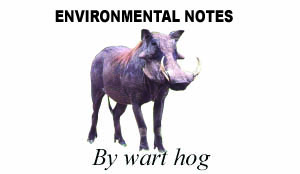 There are 5 different soil types that gardeners and growers usually work with. All five are a combination of just three types of weathered rock particles that make up the soil: sand, silt, and clay. How these three particles are combined defines your soil’s type — how it feels to the touch, how it holds water, and how it’s managed, among other things.
There are 5 different soil types that gardeners and growers usually work with. All five are a combination of just three types of weathered rock particles that make up the soil: sand, silt, and clay. How these three particles are combined defines your soil’s type — how it feels to the touch, how it holds water, and how it’s managed, among other things.
Sandy soil
Sandy soil has the largest particles among the different soil types. It’s dry and gritty to the touch, and because the particles have huge spaces between them, it can’t hold on to water.
Water drains rapidly, straight through to places where the roots, particularly those of seedlings, cannot reach. Plants don’t have a chance of using the nutrients in sandy soil more efficiently as they’re swiftly carried away by the runoff.
Testing what type of soil you’re working with involves moistening the soil and rolling it into a ball to check the predominating soil particle.
When you roll the slightly wet sandy soil in your palms, no ball should be formed and it crumbles through your fingers easily.
Silty soil
Silty soil has much smaller particles than sandy soil so it’s smooth to the touch. When moistened, it’s soapy slick. When you roll it between your fingers, dirt is left on your skin.
Silty soil retains water longer, but it can’t hold on to as much nutrients as you’d want it to though it’s fairly fertile. Due to its moisture-retentive quality, silty soil is cold and drains poorly.
Silty soil can also easily compact, so avoid trampling on it when working your garden. It can become poorly aerated, too.
Clay soil
Clay soil has the smallest particles among the three so it has good water storage qualities. It’s sticky to the touch when wet, but smooth when dry.
Due to the tiny size of its particles and its tendency to settle together, little air passes through its spaces. Because it’s also slower to drain, it has a tighter hold on plant nutrients. Clay soil is thus rich in plant food for better growth.
Clay soil is cold and in the spring, takes time to warm since the water within also has to warm up. The downside is that clay soil could be very heavy to work with when it gets dry.
Especially during the summer months, it could turn hard and compact, making it difficult to turn. (When clay soil is worked while it’s too wet though, it’s prone to damage).
If moistened soil feels sticky, rolls up easily, and forms into a ball or sausage-like shape, then you’ve got yourself clay.
Peaty soil
Peaty soil is dark brown or black in color, soft, easily compressed due to its high water content, and rich in organic matter. Peat soil started forming over 9,000 years ago, with the rapid melting of glaciers. This rapid melt drowned plants quickly and died in the process.
Their decay was so slow underwater that it led to the accumulation of organic area in a concentrated spot.
Although peat soil tends to be heavily saturated with water, once drained, it turns into a good growing medium. In the summer though, peat could be very dry and become a fire hazard. (I kid you not – peat is the precursor of coal.) The most desirable quality of peat soil, however, is in its ability to hold water in during the dry months and its capacity to protect the roots from damage during very wet months.
Peat contains acidic water, but growers use it to regulate soil chemistry or pH levels as well as an agent of disease control for the soil.
When wet peat soil is rolled, you won’t form a ball. It’s spongy to the touch and when squeezed, water could be forced out.
Saline soil
The soil in extremely dry regions is usually brackish because of its high salt content. Known as saline soil, it can cause damage to and stall plant growth, impede germination, and cause difficulties in irrigation.
The salinity is due to the buildup of soluble salts in the rhizosphere – high salt contents prevent water uptake by plants, leading to drought stress.It’s easy enough to test if you have saline soil. You’ll probably see a white layer coating the surface of the soil, your plants are growing poorly, and they’re suffering from leaf tip burn, especially on young leaves.
Loam soil
The type of soil that gardens and gardeners love is loamy soil. It contains a balance of all three soil materials – silt, sand and clay – plus humus. It has a higher pH and calcium levels because of its previous organic matter content.Loam is dark in colour and is mealy – soft, dry and crumbly – in your hands. It has a tight hold on water and plant food but it drains well, and air moves freely between soil particles down to the roots.
The feel test for loam yields a smooth, partly gritty, partly sticky ball that crumbles easily.Although loamy soil is the ideal material to work with, don’t despair if you don’t have it in your garden. That’s because soil will always favour one particles size over the two others.
Then again, there are many ways to condition your soil – adding beneficial soil inoculants, covering your soil with compost, or simply spraying leaves and soil with compost tea.
Wildlife & Environmental Conservation Society of Zambia
P.O. Box 30255, Lusaka, Zambia.
Telefax: 260-211-251630,
Cell: 0977-780770
E-mail: wecsz@coppernet.zm






